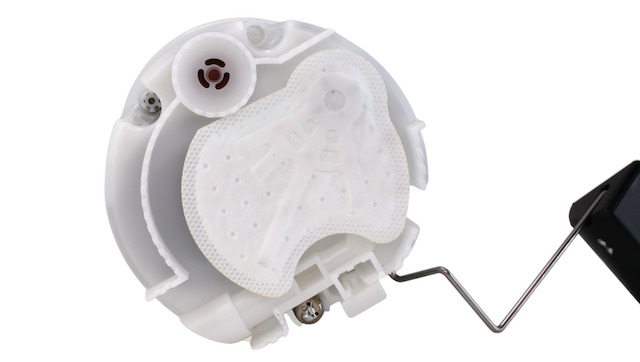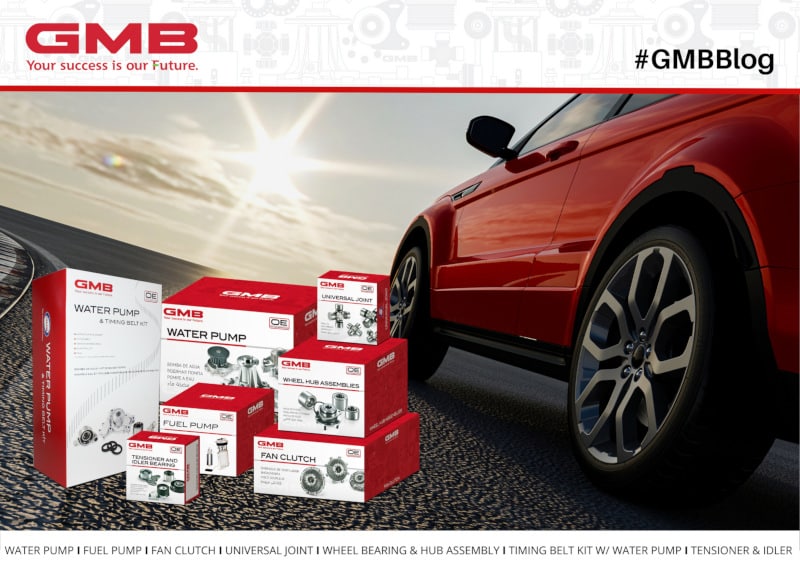When To Replace A Fuel Pump Strainer
Sometimes mistakenly called a fuel pump filter, the fuel pump strainer keeps a variety of contaminants out of the fuel pump. When a fuel pump strainer gets clogged, it restricts the flow of fuel into the pump. The fuel pump will fail as a result. In fact, one of the top causes of fuel pump failure is a clogged strainer.
What Is A Fuel Pump Strainer?

The fuel pump strainer is an oblong filter made out of very fine mesh material. Where’s the fuel pump strainer located? It’s fitted over the fuel pick-up tube at the bottom of the fuel pump, which is inside the fuel tank. The fuel tank can get really dirty over time. It’s common for a fuel tank to become contaminated with the following impurities:
- Dirt
- Sand
- Water
- Tank sediment
- Rust particles
- Gasoline deposits and varnish
The fuel pump strainer traps these contaminants before the fuel enters the fuel pump. Its sole purpose is to protect the pump and prolong its life.
The Fuel Filter: Is It The Same Part As The Fuel Pump Strainer?
Sometimes there’s another filter within the fuel system: the fuel filter. It’s not the same as the fuel pump strainer.
The biggest difference between these filters is:
- A fuel filter uses a pleated paper filter
- A fuel pump strainer uses a fine mesh screen
A fuel filter is located in the fuel line between the tank and engine. It is usually found in older cars. A strainer is only found in the fuel tank, in cars that have a fuel pump in the fuel tank.
It’s recommended to replace the fuel filter every 30,000 miles, or every 2 years. You may be wondering if you should replace the fuel pump strainer along with the fuel filter. The answer is no.
The Fuel Pump Strainer Only Gets Replaced When The Fuel Pump Gets Replaced

If you’re wondering when to change the fuel pump strainer, it would never be changed by itself. It’s because the fuel pump strainer is an integral part of the fuel pump assembly. If the fuel pump fails, the new fuel pump will come with a new strainer.
Signs Of Fuel Pump Failure
A good quality fuel pump lasts about 100,000 miles or more. Sometimes a fuel pump can fail early. When that happens, you’ll know. The most common signs of fuel pump failure are:
- Reduced engine power
- Difficulty starting the engine
- The engine “choking out” or dying after running for a while
- A check engine light that returns a lean code from the ECU
- A whining noise from the fuel tank area
How To Prolong The Life Of A Fuel Pump
The fuel pump strainer exists to keep contaminants out of the fuel pump and to prolong its life. Sometimes it’s not enough, though. If the gas tank is too dirty, the strainer gets clogged up faster, and that leads to imminent fuel pump failure.
The good news is there are a few things you can do to prolong the life of your fuel pump. To sum it up:
- Don’t habitually run with less than 1/4 tank of gas.
- Only fill up at newer gas stations
- Don’t fill up when the fuel delivery truck is at the gas station
If your fuel pump fails, be sure to use a high quality replacement fuel pump, like OE-quality GMB fuel pumps.
MORE CONTENT
Stay current!
Sign up here to get the latest news
and updates on all things GMB.
Sign Up To Receive GMB News & Updates!

